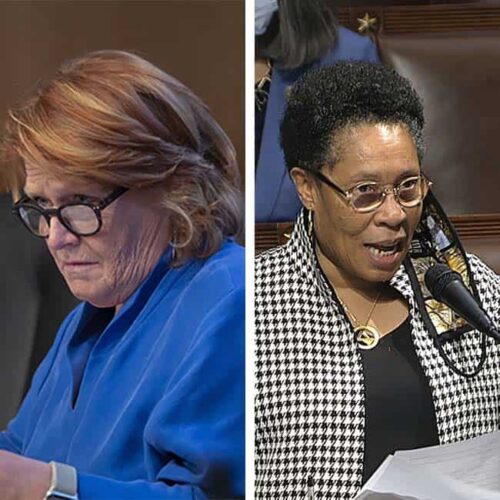Introduction
When he picks his agriculture secretary, President-elect Joe Biden will signal whether farm policy continues to have outsize focus at the U.S. Department of Agriculture or there will be new emphasis on food and nutrition programs that affect an array of Americans.
The USDA’s new leader will oversee an agency that employs more people than the departments of Education, Energy, Housing and Urban Development, Labor and State combined. Its nearly 100,000 employees are based in hubs in Washington, D.C., and Kansas City, Missouri, and scattered among offices in each state and 98 international offices that cover 177 countries.
About 65% of the department’s $150 billion annual budget goes toward nutrition programs that benefit urban and rural Americans alike, while 22% is dedicated to farm, conservation and commodity programs, which are more common in rural areas. Rural development initiatives that support local businesses, housing and utilities, and other investments in research, food safety, marketing and regulatory programs make up 8% of the USDA’s budget. The remaining 5% goes toward forestry.
The two women seen as the top candidates for agriculture secretary illustrate the tension between programs that benefit corporations and those that support food and nutrition. Former Sen. Heidi Heitkamp of North Dakota has been described by critics as aligning with “corporate agribusiness at the expense of family farmers.” Rep. Marcia Fudge of Ohio is considered a staunch advocate of the nutrition and anti-hunger programs that make up two-thirds of USDA’s spending. But she’s not from “farm country,” which historically has had a lock on the post.
Both have long careers in public service and experience on congressional agriculture committees. Since losing her Senate seat, Heitkamp has started an organization to help Democrats reach the remote, rural communities that support Republicans. Fudge is a longtime supporter of food stamps and child nutrition programs.
“We need a radical transformation in the understanding of what that department is for and who it is here to serve,” said Ricardo Salvador, director of the Food and Environment Program at the Union of Concerned Scientists.
The USDA has been led by only one woman in its history. If selected, Fudge would be the first Black woman to serve as agriculture secretary.
“To say that this is a pick that has to be somebody that’s from a rural area is an insult because agriculture affects everything,” said Rep. Juanita O. Brent, D-Ohio. Like Fudge, Brent serves as ranking member of the state House’s agriculture committee while representing an urban constituency in Cleveland.
Debates about which direction the department should take become racialized because “rural” is often associated with white farmers as food producers, while “urban” evokes consumers, said Monica White, a professor of environmental justice at the University of Wisconsin-Madison. The USDA should be inclusive of both, she said.
“When we do an urban versus rural it ends up being a racial divide that I think is an overly simplistic analysis of a food system that needs both,” White said.
For some, the USDA has fundamental problems that transcend any one leader. Naming a secretary won’t make a difference given the “disdain and contempt” the department has shown the African-American community, said Thomas Burrell, president of Black Farmers and Agriculturalists Association Inc.
“The Department of Agriculture is responsible for, and has done a yeoman’s job, in making sure African American communities receive food stamps,” Burrell said. “But it has not been willing to make loans available to African American farmers that would otherwise be able to supply that food. So we are relegated to being consumers.”
We can’t do this work without your support.
The department was established during the Civil War, when a much higher percentage of Americans made their living through farming — and slavery supported agriculture in the South. A century ago, there were nearly a million Black farmers. They number fewer than 50,000 today largely due to discriminatory federal policies that were exposed in lawsuits filed against the USDA since the late 1990s by Blacks, Hispanics and Native Americans.
These days, most Americans are consumers, not producers, of food. And anti-hunger programs are critical to urban and rural communities alike. A study found that 16% of households in rural areas and small towns participate in the food stamp program, the Supplemental Nutrition Assistance Program, or SNAP, compared to 13% of households in cities.
“There’s this misperception of where hunger is in America,” said Lindsey Haynes-Maslow, who oversees a SNAP-education program at North Carolina State University. “Hunger really is everywhere, and it’s only worsened by the pandemic.”
Read more in Inside Public Integrity
Watchdog newsletter
Capitol attack underscores white supremacist infiltration of police, military
Watchdog newsletter
Words matter: Was the attack on the Capitol a rally, protest or insurrection?
The question remains how history will record the events that resulted in mayhem at the U.S. Capitol.


Join the conversation
Show Comments